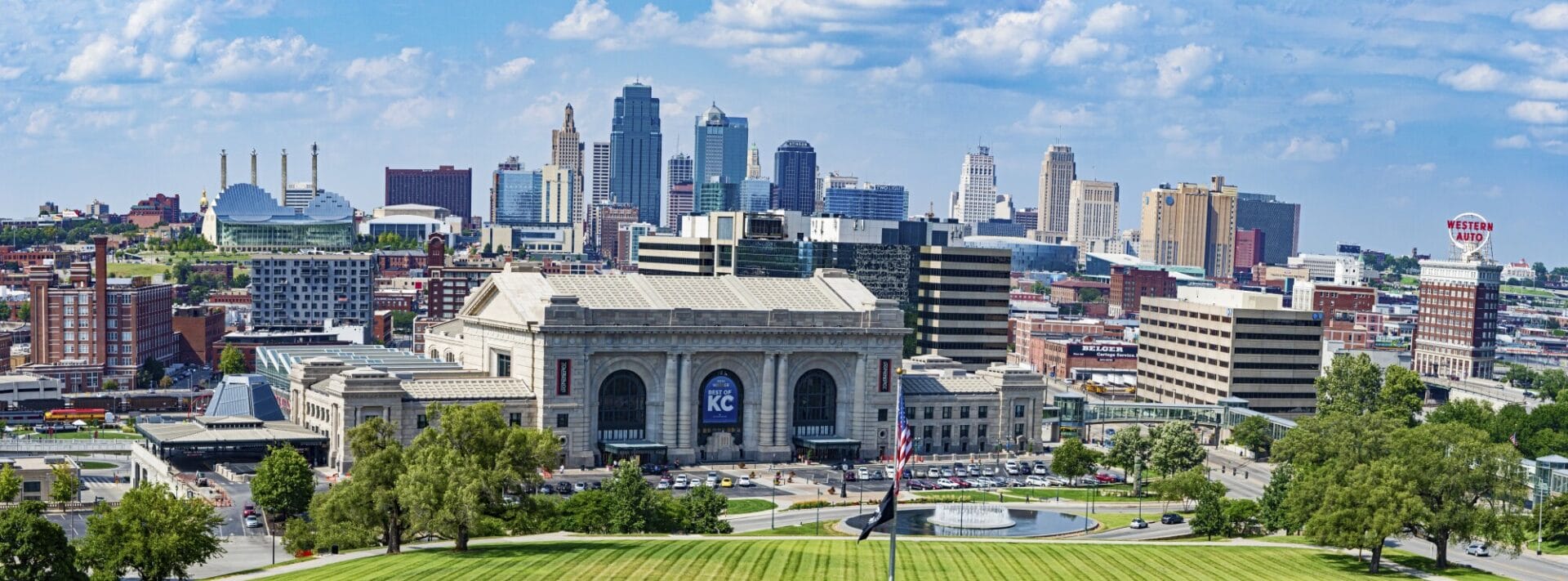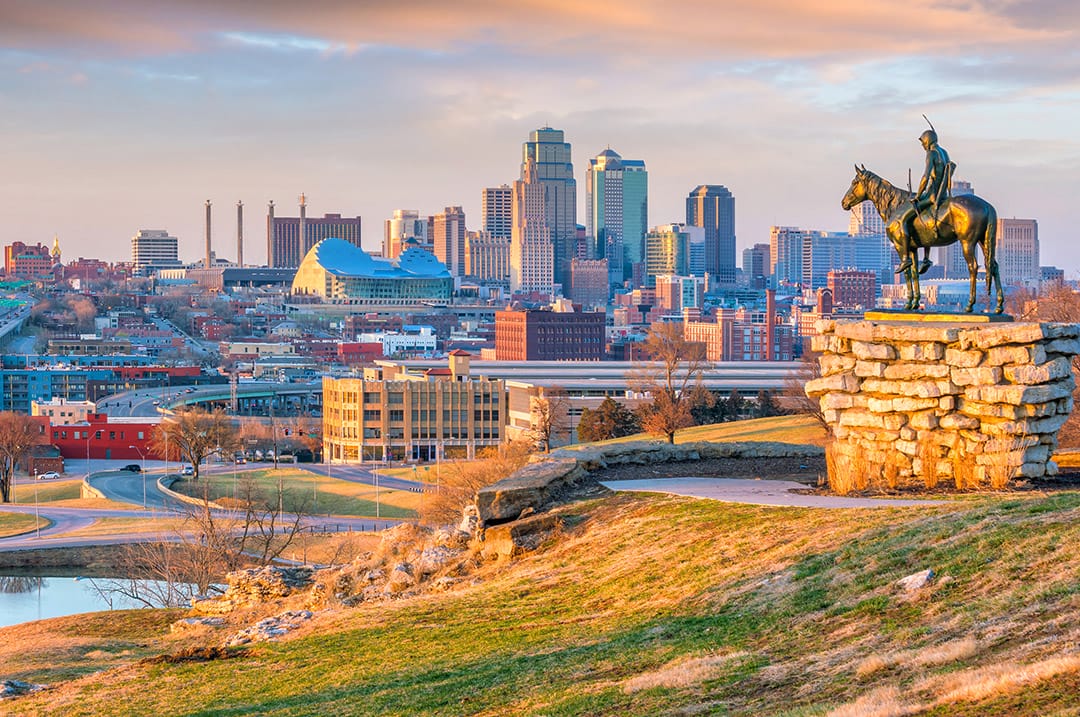If you’re thinking about relocating to the Midwest, Kansas City, Missouri, deserves your attention. This city combines affordability, charm, and a growing economy with a vibrant cultural scene and friendly neighborhoods. Whether you’re looking for career opportunities, a family-friendly community, or simply a better quality of life, moving to Kansas City has plenty to offer.
But like any city, it’s not perfect. This guide gives you a complete, no-fluff overview, from the benefits and lifestyle perks to the drawbacks you’ll want to consider before you make the move.
Location Matters: Where Is Kansas City, Missouri?
Kansas City is unique in that it spans two states, Missouri and Kansas. While there is a Kansas City, Kansas, the heart of the city is located in Missouri. This is where you’ll find the downtown skyline, cultural centers, historic sites, and most of the nightlife and entertainment options. The Missouri side is often what people refer to when they talk about Kansas City.
The Kansas suburbs, including places like Overland Park and Olathe, are also popular for their schools and quiet neighborhoods. However, the Missouri side tends to have more history, local flavor, and a true urban feel.

The Cost of Living: Affordable in All the Right Ways
Kansas City is widely known for its affordability. The cost of living is about 2.5 percent lower than the national average, which stretches your income further in every category.
- Housing: The median home price in the metro area hovers between $140,000 and $160,000, significantly below the national median.
- Rent: You can find one-bedroom apartments for much less than in cities like Austin, Denver, or Nashville.
- Utilities, groceries, gas, and healthcare also come in at or below average costs.
- Public transportation is free for bus riders within the city limits, thanks to KC’s zero-fare transit program.
This cost-friendly lifestyle is a major reason why more people are choosing to settle down here.
Neighborhoods with Personality and Range
Kansas City offers a wide mix of neighborhoods, whether you’re looking for historic charm, suburban calm, or an artistic vibe.
- Brookside and Waldo: Great for families and professionals who want a quiet, walkable community.
- Crossroads Arts District: Ideal for creatives and city dwellers who enjoy galleries, lofts, and craft breweries.
- Westport: Rich with nightlife, bars, restaurants, and music venues.
- River Market: Popular among young professionals for its proximity to downtown and access to trails and shops.
Suburban areas such as Overland Park, Lee’s Summit, and Liberty offer great schools, newer homes, and more space while staying connected to the city.
The Job Market: Growing but Competitive
Kansas City’s economy is diverse and continues to grow. Key industries include:
- Healthcare and Biosciences
- Transportation and Logistics
- Finance and Insurance
- Tech and Startups
While wages can be lower than in coastal cities, the lower cost of living usually makes up the difference. Unemployment remains low, and job growth is projected to rise by more than 30 percent in the next decade.
Notable employers include Cerner, Hallmark, Garmin, and several large hospital systems and universities.
Education and Schools: Improving and Expanding
Kansas City has made steady progress in education. While public schools in the urban core have struggled historically, many families opt for charter schools, magnet programs, or high-performing suburban districts.
Top educational options include:
- University Academy
- Academie Lafayette
- Lincoln College Prep
- Blue Springs and Park Hill School Districts
- Private schools like Pembroke Hill and Barstow
Higher education options include UMKC, Rockhurst University, and nearby campuses of the University of Kansas and Kansas State.
Four Distinct Seasons: A Pro and a Con
Kansas City gives you the full range of seasonal weather:
- Spring: Beautiful and green, but it brings thunderstorms and occasional tornado watches.
- Summer: Hot and humid, with temperatures reaching the 90s and above.
- Fall: Crisp air, colorful trees, and plenty of festivals.
- Winter: Cold, with snow and freezing temperatures, though usually not extreme.
Some enjoy the seasonal variety, while others find the quick shifts and humid summers hard to handle.
Culture and Things to Do: An Underrated Gem
Kansas City has a growing arts, music, and food scene. The city is packed with cultural attractions and local pride.
Must-see spots include:
- The Nelson-Atkins Museum of Art
- National World War I Museum
- Union Station and Science City
- The Kauffman Center for Performing Arts
- Jazz District at 18th and Vine
- Power & Light District
- Sporting events, including Chiefs (NFL), Royals (MLB), and Sporting KC (MLS)
And of course, the city’s barbecue culture is legendary, with dozens of well-loved joints like Joe’s KC, Q39, and Gates.
Green Space, Trails, and Parks Everywhere
Kansas City has over 220 parks, 12,000 acres of public green space, and more than 100 miles of trails for walking, running, and biking. It also has more fountains than any city except Rome.
Popular spots include:
- Swope Park (larger than NYC’s Central Park)
- Loose Park with a beautiful rose garden
- Cliff Drive Scenic Byway
- Berkley Riverfront Park
- Longview Lake and Blue Springs Lake for boating and fishing
Things You Might Not Love About Living in Kansas City
As much as Kansas City offers, no place is perfect. Here are some realistic drawbacks to keep in mind.
1. Public Transportation Is Limited
While the KC Streetcar and city buses are free, the overall system is still limited. If you live outside the downtown core or in the suburbs, a car is pretty much essential. The city is spread out, and rideshare options can get pricey over time.
2. Weather Can Be Extreme
The city’s location near Tornado Alley means you’ll experience strong thunderstorms and tornado watches, especially in the spring. Summers are hot and humid, and winters can be icy and cold. If you’re coming from a mild climate, KC weather may feel like a shock.
3. Pockets of Crime
Like many metro areas, Kansas City struggles with crime in certain neighborhoods, particularly on the east side. While most neighborhoods are safe, especially in the suburbs, it’s important to research specific areas before deciding where to live.
4. School Quality Varies
While the suburbs and charter programs offer strong school options, not all public schools in the city center perform well. Families moving into the city should carefully explore school ratings and boundaries to ensure a good fit.
5. Limited Nightlife Outside Key Areas
Downtown, Westport, and the Crossroads district have plenty to offer. But outside those areas, options for dining, live music, and entertainment are thinner. This can be especially noticeable for those coming from larger metro areas with around-the-clock activity.

So, Is Kansas City Right for You?
Kansas City offers a compelling combination of affordability, opportunity, culture, and comfort. It’s not flashy, but it is genuine. The city has room to grow, breathe, and build a life — all without breaking the bank.
If you’re seeking balance, Kansas City could be a smart move. But it’s worth weighing the trade-offs too. If you need walkable, dense urban infrastructure or tropical winters, KC may not be your perfect match. If you want space, opportunity, and a community that feels grounded, this city could be exactly what you’re looking for.
Thinking About Making the Move?
Let Moving Proz help you settle into your new life in Kansas City. Whether you’re moving from across the state or across the country, we provide expert service, transparent pricing, and stress-free moving support.
Request your free quote today and let us handle the heavy lifting.